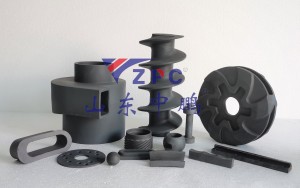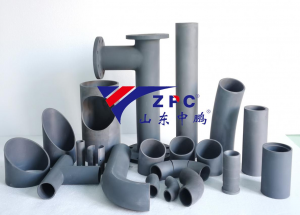Silicon carbide (SiC) ceramics are known for their incredible strength, heat resistance, and durability. These properties make them ideal for use in tough environments, like aerospace engines or industrial machinery. But how exactly are these advanced materials created? Let’s break down the process step by step.
1.Raw Material Preparation
It all starts with high-purity silicon carbide powder. Think of this as the“flour”for baking a ceramic“cake.”To improve the final material’s properties, small amounts of additives—like aluminum oxide or boron compounds—are mixed in. These additives act like glue during later stages, helping the particles bond more effectively.
2. Shaping the Ceramic
The powder is then turned into a moldable form. Two common methods are used:
Pressing:The powder is compressed into a specific shape using high pressure, similar to compacting snow into a snowball.
Injection Molding:The powder is mixed with a temporary binder (like wax) to create a dough-like mixture, which is injected into molds for complex shapes.
At this stage, the material is still fragile—like a dry sand sculpture—and needs to be “baked” to become strong.
3. The Sintering Process
This is where the magic happens. The shaped ceramic is heated in a special furnace at extremely high temperatures (often above 1,800°C). During sintering, two key things occur:
Particles Bond:The silicon carbide grains grow closer, eliminating gaps and forming a solid structure.
Additives Work:The added compounds melt slightly, creating a “bridge” between particles to enhance toughness.
The environment inside the furnace is carefully controlled—sometimes filled with inert gases—to prevent unwanted reactions.
4. Finishing Touches
After sintering, the ceramic might undergo additional treatments to refine its performance:
Polishing:For applications requiring smooth surfaces (e.g., seals or bearings).
Coating:A thin protective layer (like silicon nitride) can be added to boost wear resistance.
Machining:Precise cutting or drilling to achieve final dimensions.
Why This Process Matters
The secret to silicon carbide’s strength lies in how its atoms bond during sintering. The high-temperature process creates a network of strong silicon-carbon bonds, which are resistant to heat, corrosion, and physical stress. Additives and precise temperature control ensure the final product isn’t just hard but also tough enough to resist cracking.
The Bigger Picture
From cutting-edge turbines to pollution control systems, silicon carbide ceramics play a vital role in modern technology. While the manufacturing process is complex, it’s this careful balance of science and engineering that turns simple powder into a material capable of withstanding the harshest conditions.
As research advances, new methods—like 3D printing of ceramics—are emerging, promising even more innovative uses for this extraordinary material.
Post time: Mar-19-2025


